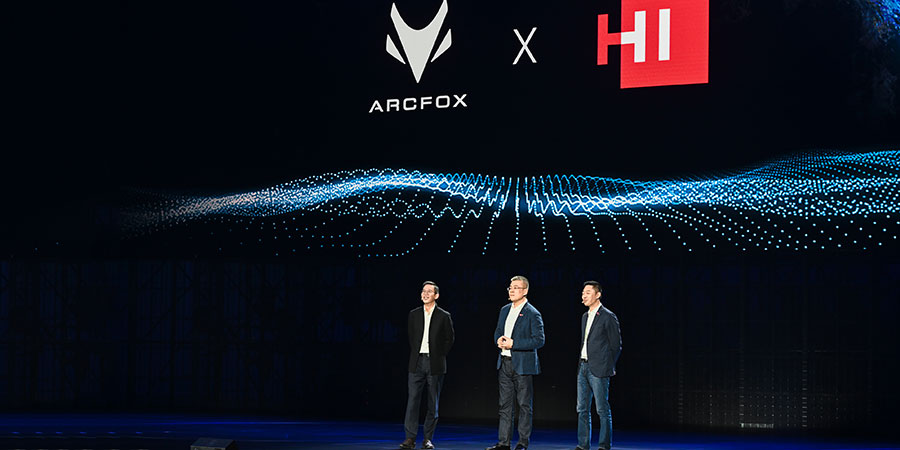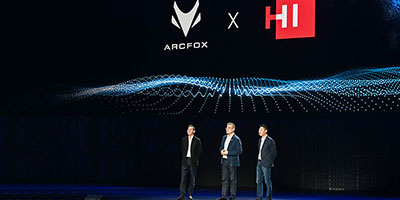
On the eve of Auto Shanghai 2021, Huawei launched its next-generation intelligent components and solutions, including the 4D imaging radar, AR-HUD, and MDC 810 during its Huawei Inside (HI) product launch titled “Focused Innovation for Intelligent Vehicles”. These products are designed to help OEMs build advanced intelligent vehicles and enable the Chinese automotive industry to upgrade their technology and become a pioneer of new energy and autonomous driving.
In October 2020, Huawei launched the HI brand. As a digital car oriented provider of new components, Huawei has closely worked with OEMs to build premium intelligent vehicles under the innovative “Huawei Inside” initiative, which includes a brand-new digital architecture for intelligent vehicles, five intelligent solutions (Intelligent Driving, Intelligent Cockpit, mPower, Intelligent Connectivity, and Intelligent Vehicle Cloud), and over 30 intelligent components.
“The ‘Huawei Inside’ initiative is designed to integrate Huawei’s technological strengths with the vehicle manufacturing capabilities of automakers to build high-end intelligent vehicles that provide a more enjoyable driving experience,” commented William Wang, President of Huawei’s Intelligent Automotive Solution Business Unit (IAS BU). “Facing accelerated transformation of intelligent vehicles, Huawei is committed to lighting up the future of autonomous vehicles through innovation.”
Intelligent cockpit delivers an upgraded driving experience
The Huawei Intelligent Cockpit Solution adopts the self-developed computing platform and HarmonyOS (cockpit), featuring an extensive application, software, and hardware ecosystem that provides users with desired services and functions through open collaboration with OEMs, tier-1 vendors, and app partners. Huawei has developed cutting-edge technologies for the intelligent cockpit, to continuously enhance user experience. For example, the Kirin head unit (HU) modules feature an independent Neural Processing Unit (NPU) that performs complex device processing; the Cockpit Vision smart screen can restore color and enable smooth touch, delivering a pleasurable driving experience to users; the AR-HUD is more compact in size, able to provide a larger field of view and HD display.
Based on its years of experience in the field of optical technology and its leading futuristic technology, Huawei has rolled out a high-performance AR-HUD. The 10 L AR-HUD can transform an ordinary windshield into a 70-inch HD screen and intelligently adjust the projection area by tracking users’ eye movements. It can display a viewing angle of 13° x 5°, allowing users to view detailed information on the windshield. Its powerful visual identification and AI capabilities deliver an immersive visual experience and driving assistance.
High-resolution 4D imaging radar enables advanced autonomous driving
Huawei’s high-resolution 4D imaging radar uses a 12T24R large antenna array (12 transmit channels and 24 receive channels), which offers a 24-fold improvement over the antenna configuration of a conventional mmWave radar (3T4R) and 50% more receive channels than industry imaging radars, making it an imaging radar with the largest antenna array available for mass production.
The 4D imaging radar delivers a unique non-line-of-sight (NLOS) sensing strength that helps detect hidden objects while maintaining superior distance and velocity measurement capabilities of the traditional mmWave radar, allowing it to perform functionally regardless of ambient lighting and bad weather. On top of that, Huawei’s 4D imaging radar has a high resolution and is capable of confidently detecting objects with a larger detection range. It can produce a point cloud density on par with lidars, enabling abundant radar applications such as environment reconstruction, mapping, and localization. By converging point clouds of multiple radars, vehicles can enjoy a 360° surround view, thereby implementing full-coverage sensing of all objects in different scenarios under all weather conditions.
HUAWEI MDC 810
Currently, the intelligent driving industry is gaining momentum, racing towards mass production. Huawei is dedicated to building an open and standardized MDC. Based on its solid experience and achievements in hardware, software, and security engineering, Huawei has built the most powerful computing platform for intelligent driving — MDC — accelerating the mass production of intelligent vehicles.
The MDC 810 launched during Auto Shanghai 2021 is a mass-produced intelligent driving computing platform with the industry’s highest computing power. It provides dense computing power of up to 400 TOPS in compliance with the ASIL-D safety requirements. Equipped with the MDC Core (including the intelligent driving operating systems AOS and VOS) and a complete toolchain, the MDC 810 can enable high-level autonomous driving functions such as Traffic Jam Pilot (TJP), Highway Pilot (HWP), and Auto Valet Parking (AVP). The ARCFOX Alpha S sedan will be the first vehicle to feature HUAWEI MDC 810, and more vehicle models will be powered by HUAWEI MDC series in the near future.
HUAWEI MDC is an open, standardized platform aiming to boost the growth of the intelligent driving industry. Huawei has been working closely with vendors of sensors, actuators, and application algorithms to build such technology ecosystems based on the MDC. Through the open computing platform, Huawei unites the efforts of eco-partners to accelerate construction of the intelligent driving ecosystem, stepping into the mass production phase of intelligent vehicles.
HUAWEI Octopus
HUAWEI Octopus leverages massive data, HD map, and advanced algorithms to build a data-driven, closed-loop platform for intelligent driving. Relying on its vehicle-cloud synergy, industry-leading annotation capacity, upgraded virtual simulation, and one-stop secure, compliant cloud services, HUAWEI Octopus is designed to help OEMs build autonomous driving development capabilities from scratch, lower development requirements, and improve development efficiency.
Cloud is the only bridge between autonomous driving development and its commercialization. Vehicles in all regions must be connected to the local cloud to help resolve the coverage, security, and scalability issues that come with commercializing autonomous driving. By migrating data to cloud, developers no longer need to worry about expanding equipment rooms to accommodate larger volumes of data, allowing them to focus more on core algorithm development.
HD maps are also a vital element for autonomous driving. In preparation for this, Huawei officially announced its latest HD map cloud service capability and roadmap at the product launch. Currently, Huawei has obtained grade-A surveying and mapping qualification to produce electronic navigation maps and developed comprehensive HD map data collection and mapping capabilities.
HUAWEI TMS
By adopting a simplified architecture and centralizing the components as well as control functions, Huawei TMS improves the operating temperature of heat pumps from –10°C to –18°C without compromising on comfort. As a result, the range of new energy vehicles (NEVs) is increased by 20%. In addition, HUAWEI TMS provides personalized applications, helping OEMs build a thermal system with optimal energy efficiency and superior experience.
As the automobile industry shifts over to electric power, thermal management systems are growing in importance. Currently, most NEVs use the inefficient PTC heating solution, which reduces the range by 30% to 40% at lower temperatures. As a result, the heat pump system that features high energy efficiency (twice that of the PTC) will be the future of thermal management. It is estimated that heat pumps may enjoy a 3x faster penetration rate between 2020 and 2025. However, the conventional heat pump solution faces many challenges, namely, excessive pipes and parts, poor environmental adaptability (not functional below –10°C), and lack of intelligence (manual calibration), adversely affecting the efficiency and application of the heat pump system. After four years of research and development, Huawei has rolled out the most integrated, intelligent thermal management solution for vehicles. Through integrated design as well as centralized components and control functions, HUAWEI TMS has achieved 100% improvement in energy efficiency, 60% improvement in calibration efficiency, and improved user experience.
Huawei considers intelligent automotive components as its long-term strategic opportunity. The company will continue to channel more investments into this field, particularly into the development of autonomous driving software, to build an advanced autonomous driving system. This year, Huawei will form a team of over 5000 people working in the R&D of intelligent automotive components, and its investment in this field will total US$1 billion. By nurturing high-end talent through R&D centers in Europe, Japan, and China, Huawei aims to strengthen its product competitiveness with a focus on innovation.







